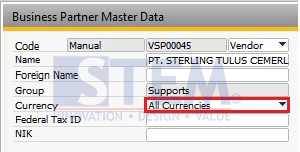
Understanding the risks and benefits of each bond investing strategy is essential before you make a decision to invest. This article will address the Risk of Interest rate and Reinvestment, Tax efficiency, and the Ladder Strategy. These strategies are intended to help you avoid common pitfalls while maximising your return. Keep reading to find out more. These strategies are good for beginners. If you have a specific goal you can combine many strategies into a single portfolio.
Interest rate risk
When investing in bond investments, it is important to understand the risks of interest rate risk. Bonds can be a safe investment, but they are susceptible to changes of interest rates. For example, if interest rates were to rise by 2% tomorrow, the price of a 10-year Treasury would decrease by 15%. A 30-year Treasury with a rate of interest equal to 2% would be worth 26% less if it rose by the same amount.

Reinvestment risk
A common financial risk investors face when investing in bonds is reinvestment risk. Reinvestment occurs when an issuer calls down a bond prior to it maturing and issues a brand new bond with a lower coupon. A holder of a 10-year bond would receive its principal back, but will need to find other investment options. The term reinvestment risk is most common in bond investing, but applies to any type of investment that generates cash flows.
Tax efficiencies
Diverse asset classes are a great way to diversify your retirement portfolio. Tax-efficient investments will be more tax-efficient if the interest rate is lower than the longer term. While short-term bond rates are lower than longer-term ones (and high-quality bonds also have lower tax rates), they are tax-efficient. Asset location decisions can be made based on tax efficiency. Here are some of the most common tax shelters for bonds. Consider these considerations when choosing your investment funds.
Ladder strategy
The Ladder strategy for bond investing is a good way to diversify your portfolio. Using staggered maturities allows you to take advantage of the current interest rate environment while also reducing the cash flow impacts of credit risk. For investors looking for predictable income, bonds at different levels on the ladder can offer different degrees credit risk. The strategy cannot be used effectively if the bonds you're buying don't have call features. This is because they won't earn interest if you call.

Cash flow matching
A type of investment strategy is cash flow matching. This strategy involves a client selecting bonds of a specific face value, and holding them until maturity to generate cash inflows to pay future liabilities. But, this strategy requires a long term financial plan. A financial advisor can help you to create a plan according to your goals, risk tolerance, and other factors. You can read more about this strategy.
FAQ
What is the purpose of the Securities and Exchange Commission
SEC regulates brokerage-dealers, securities exchanges, investment firms, and any other entities involved with the distribution of securities. It also enforces federal securities law.
What is the difference in the stock and securities markets?
The securities market is the whole group of companies that are listed on any exchange for trading shares. This includes options, stocks, futures contracts and other financial instruments. Stock markets are usually divided into two categories: primary and secondary. Stock markets are divided into two categories: primary and secondary. Secondary stock market are smaller exchanges that allow private investors to trade. These include OTC Bulletin Board Over-the-Counter, Pink Sheets, Nasdaq SmalCap Market.
Stock markets are important because they provide a place where people can buy and sell shares of businesses. Their value is determined by the price at which shares can be traded. A company issues new shares to the public whenever it goes public. These shares are issued to investors who receive dividends. Dividends are payments made to shareholders by a corporation.
In addition to providing a place for buyers and sellers, stock markets also serve as a tool for corporate governance. Boards of Directors are elected by shareholders and oversee management. Boards make sure managers follow ethical business practices. If a board fails in this function, the government might step in to replace the board.
How can someone lose money in stock markets?
The stock market isn't a place where you can make money by selling high and buying low. You lose money when you buy high and sell low.
The stock market is for those who are willing to take chances. They will buy stocks at too low prices and then sell them when they feel they are too high.
They believe they will gain from the market's volatility. But if they don't watch out, they could lose all their money.
Can you trade on the stock-market?
The answer is yes. All people are not equal in this universe. Some people have more knowledge and skills than others. They should be rewarded.
But other factors determine whether someone succeeds or fails in trading stocks. If you don’t have the ability to read financial reports, it will be difficult to make decisions.
Learn how to read these reports. You need to know what each number means. And you must be able to interpret the numbers correctly.
You will be able spot trends and patterns within the data. This will enable you to make informed decisions about when to purchase and sell shares.
If you're lucky enough you might be able make a living doing this.
How does the stock market work?
By buying shares of stock, you're purchasing ownership rights in a part of the company. Shareholders have certain rights in the company. He/she is able to vote on major policy and resolutions. He/she can seek compensation for the damages caused by company. He/she may also sue for breach of contract.
A company can't issue more shares than the total assets and liabilities it has. It is known as capital adequacy.
A company with a high capital adequacy ratio is considered safe. Low ratios make it risky to invest in.
Why are marketable Securities Important?
An investment company exists to generate income for investors. This is done by investing in different types of financial instruments, such as bonds and stocks. These securities offer investors attractive characteristics. They may be considered to be safe because they are backed by the full faith and credit of the issuer, they pay dividends, interest, or both, they offer growth potential, and/or they carry tax advantages.
A security's "marketability" is its most important attribute. This refers to how easily the security can be traded on the stock exchange. Securities that are not marketable cannot be bought and sold freely but must be acquired through a broker who charges a commission for doing so.
Marketable securities are government and corporate bonds, preferred stock, common stocks and convertible debentures.
Investment companies invest in these securities because they believe they will generate higher profits than if they invested in more risky securities like equities (shares).
How do you choose the right investment company for me?
A good investment manager will offer competitive fees, top-quality management and a diverse portfolio. The type of security that is held in your account usually determines the fee. Some companies have no charges for holding cash. Others charge a flat fee each year, regardless how much you deposit. Others charge a percentage based on your total assets.
You also need to know their performance history. Companies with poor performance records might not be right for you. Avoid companies with low net assets value (NAV), or very volatile NAVs.
You also need to verify their investment philosophy. Investment companies should be prepared to take on more risk in order to earn higher returns. If they aren't willing to take risk, they may not meet your expectations.
Statistics
- Our focus on Main Street investors reflects the fact that American households own $38 trillion worth of equities, more than 59 percent of the U.S. equity market either directly or indirectly through mutual funds, retirement accounts, and other investments. (sec.gov)
- "If all of your money's in one stock, you could potentially lose 50% of it overnight," Moore says. (nerdwallet.com)
- US resident who opens a new IBKR Pro individual or joint account receives a 0.25% rate reduction on margin loans. (nerdwallet.com)
- For instance, an individual or entity that owns 100,000 shares of a company with one million outstanding shares would have a 10% ownership stake. (investopedia.com)
External Links
How To
How do I invest in bonds
An investment fund, also known as a bond, is required to be purchased. They pay you back at regular intervals, despite the low interest rates. You make money over time by this method.
There are many ways you can invest in bonds.
-
Directly purchase individual bonds
-
Buy shares of a bond funds
-
Investing via a broker/bank
-
Investing through a financial institution
-
Investing via a pension plan
-
Directly invest with a stockbroker
-
Investing through a Mutual Fund
-
Investing via a unit trust
-
Investing using a life assurance policy
-
Investing in a private capital fund
-
Investing with an index-linked mutual fund
-
Investing with a hedge funds